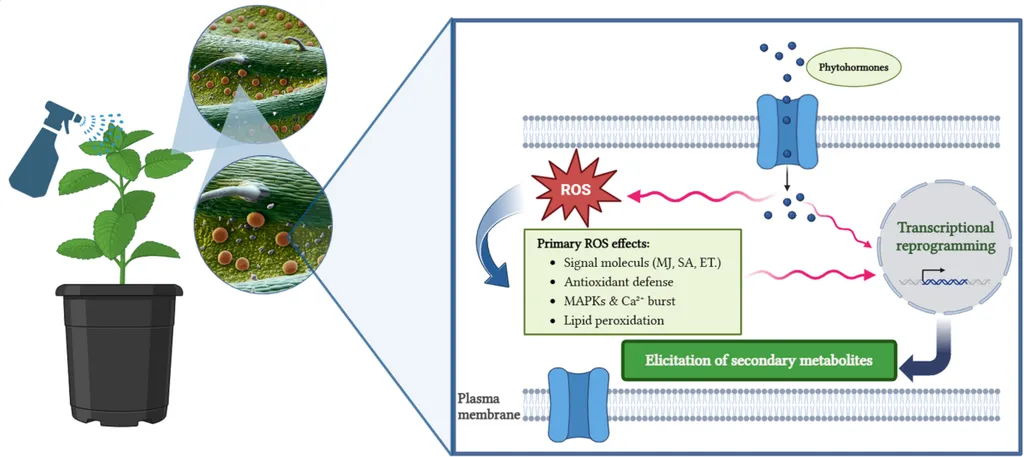In the world of agritech, scientists are constantly seeking innovative ways to enhance crop production and quality. A recent study published in *Scientific Reports* (known in English as “Nature Scientific Reports”) has shed light on a promising method to boost menthol production in peppermint, a plant with significant industrial and medicinal value. The research, led by Iman Khaldari from the Division of Biotechnology at the University of Tehran, explores the use of phytohormonal elicitors to trigger oxidative stress and enhance menthol biosynthesis.
Peppermint, known scientifically as Mentha piperita L., is prized for its essential oils and bioactive compounds, particularly menthol. This study investigated the effects of four phytohormonal elicitors—methyl jasmonate (MJ), abscisic acid (ABA), salicylic acid (SA), and gibberellic acid (GA)—on oxidative stress, gene expression, and the biosynthesis of menthol and related monoterpenes. The treatments were applied at two concentrations, 0.2 mM and 0.4 mM, and the results were evaluated using quantitative real-time PCR (qRT-PCR) for gene expression and gas chromatography–mass spectrometry (GC-MS) for metabolite profiling.
The findings revealed that MJ and SA at 0.4 mM significantly enhanced menthol and menthone levels while reducing menthofuran accumulation. “This suggests that these phytohormones can be used to optimize menthol production in peppermint,” Khaldari explained. In contrast, ABA reduced menthol content at the same concentration, whereas GA had a limited impact on metabolite levels.
The study also examined the expression of key genes associated with the menthol biosynthetic pathway, including the biosynthetic genes PR, MDH, and MFS, as well as the regulatory transcription factors MhMYB1 and MhMYB2. MJ and SA particularly upregulated MhMYB1, MhMYB2, PR, and MDH, indicating their potential to modulate gene expression for enhanced menthol production.
All phytohormones induced oxidative stress and elevated antioxidant enzyme activities, with MJ and ABA showing the strongest effects. This highlights the diverse regulatory roles of phytohormones in menthol biosynthesis and suggests that MJ and SA can be used to optimize menthol production in peppermint.
The commercial implications of this research are substantial. Menthol is a valuable compound used in various industries, including pharmaceuticals, cosmetics, and food and beverage. By optimizing menthol production through phytohormonal elicitation, farmers and producers can enhance crop quality and yield, leading to increased profitability and market competitiveness.
As the demand for natural and organic products continues to grow, the ability to enhance menthol production through sustainable and eco-friendly methods is more important than ever. This research not only advances our understanding of the regulatory roles of phytohormones in menthol biosynthesis but also paves the way for future developments in the field of agritech.
In the words of Khaldari, “This study opens up new avenues for optimizing menthol production in peppermint, which can have significant commercial impacts for the energy sector and beyond.” As we continue to explore the potential of phytohormonal elicitors, the future of menthol production looks brighter than ever.

